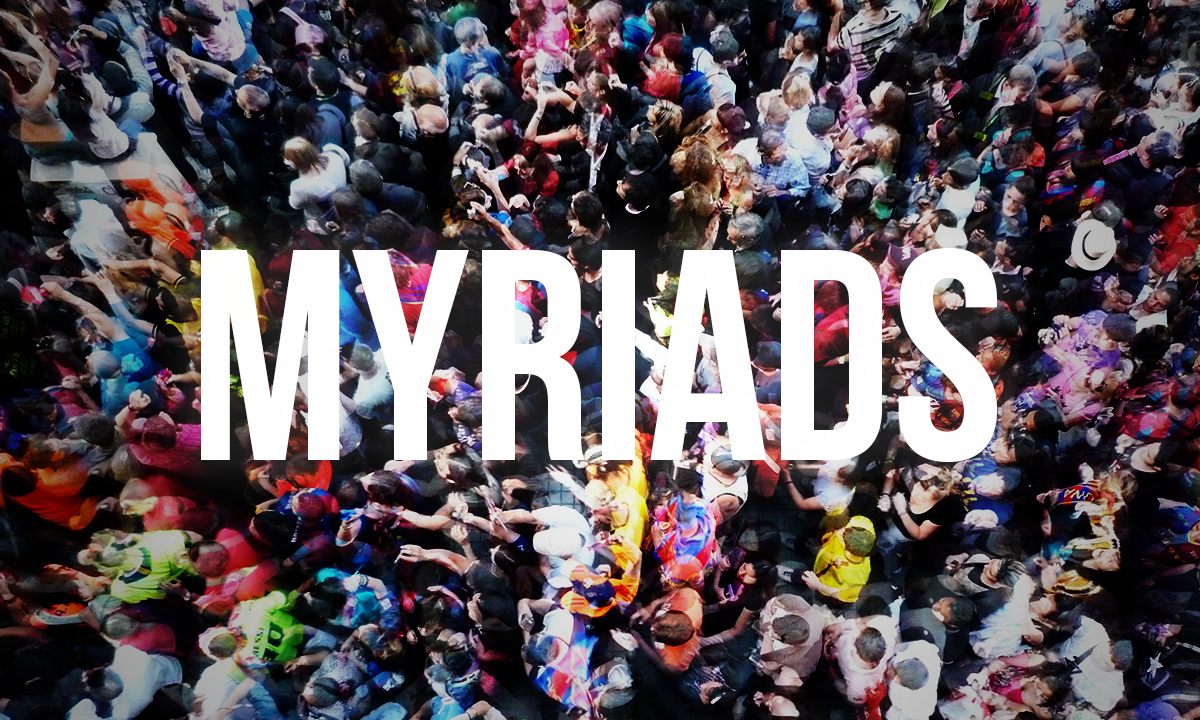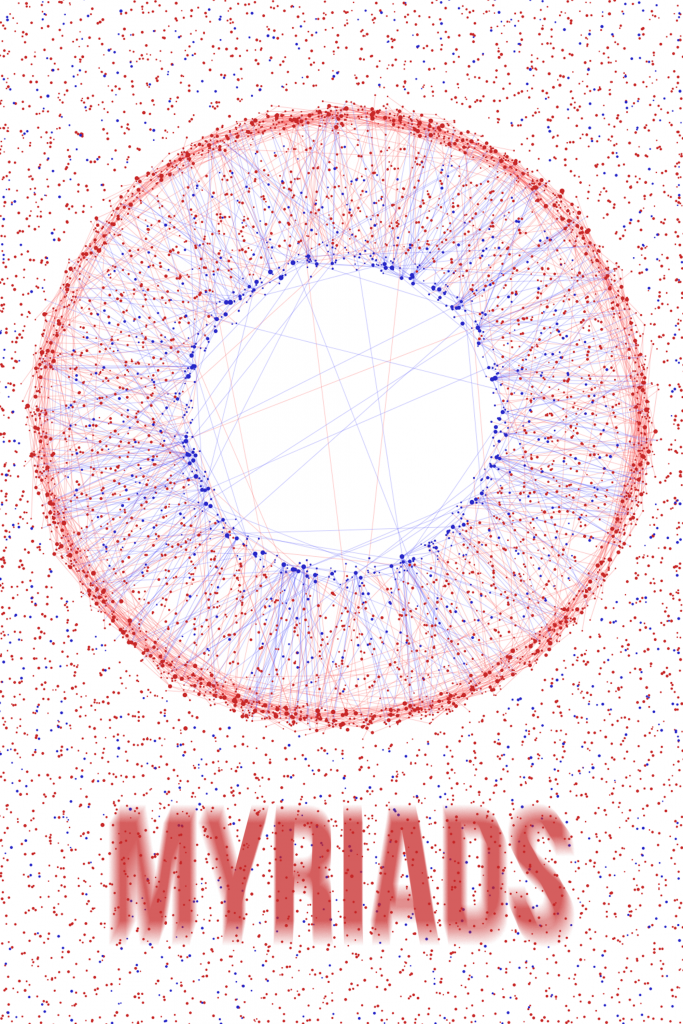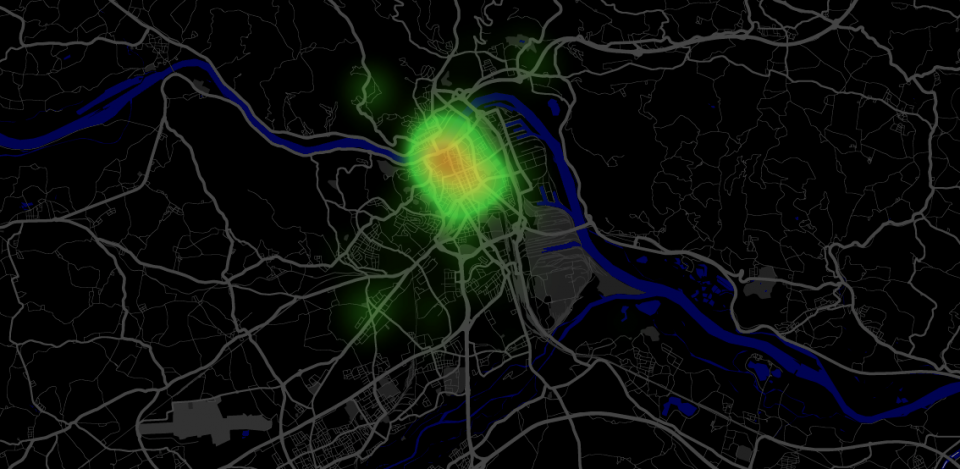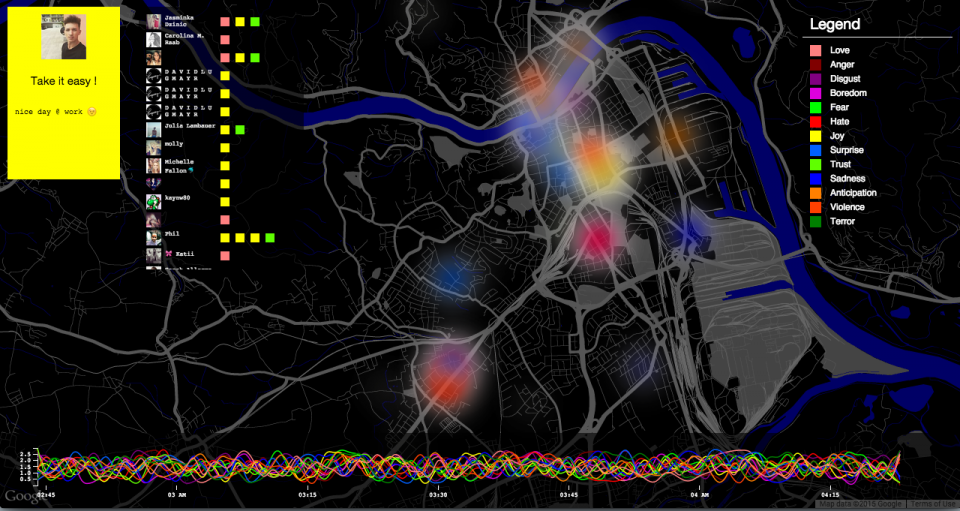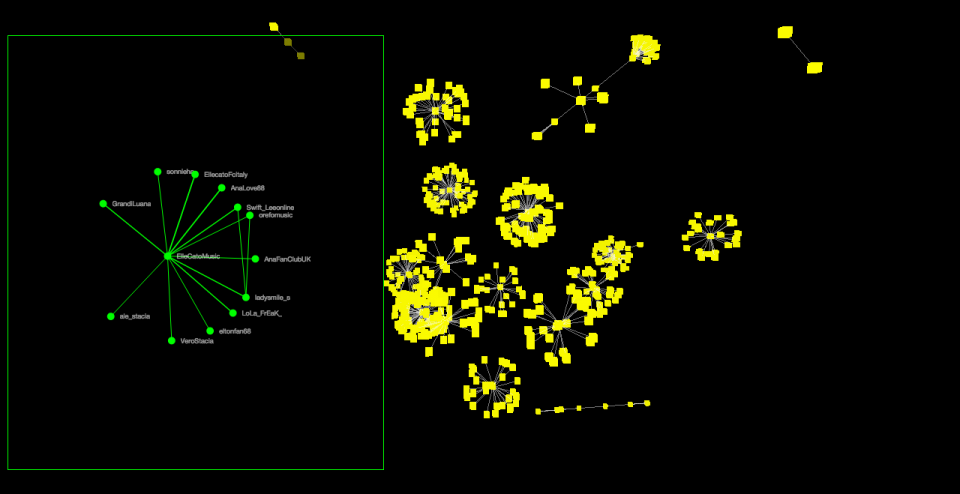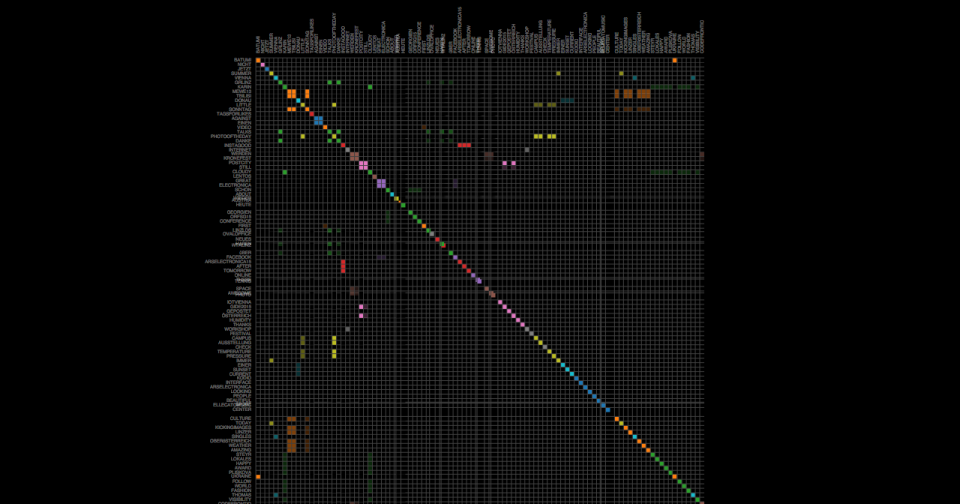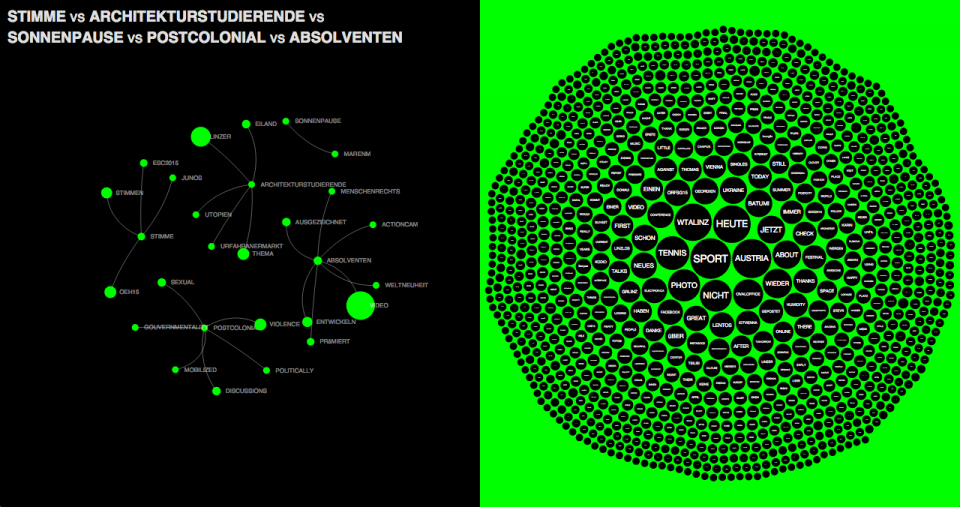This year, Art is Open Source, Human Ecosystems and Ubiquitous Commons will be featured at Ars Electronica, as part of the Post City Kit exhibition, with the Myriads project (part of the wider Ubiquitous Infoscapes project).
From Ars Electronica’s website:
Post City Kit is a toolkit of ideas, strategies, devices and prototypes for the city of the future. The city is – and will remain – a scene of a permanent human life and survival experiment. In condensed form here culture(s), social systems and economic and political policies of their time are coming to light. The Post City Kit Exhibition shows with numerous prototypes and project presentations possible development directions towards the urban habitats for the upcoming human generations.
Myriads
The Myriads project will be composed of:
- an exhibit;
- some Info-dealers;
- a series of 15 micro-workshops (aka the Workshop Pills).
Let’s see what the project is about, and what you’ll see in Ars Electronica.
The project concept
Big Data is a concept in continuous mutation. The exponential rise of the quantity and quality of data and information which individuals generate every day is the single most important driver of the evolution of the concept of Big Data.
Each of our gestures, movements, relations, transactions, expressions tend to become occasions for the generation of digital data and information.
This happens whether we realize it or not, consciously or unconsciously, in direct, indirect, transparent or completely opaque ways. At the present time, most individuals generate data in ways in which they don’t realize or understand, and which they cannot understand, due to the opacity of collection processes, algorithms, classifications, parameters. They don’t (can’t) know how this information is used: unaccessible profiles are used to generate personalized interfaces, services, advertisements, content. We are constantly becoming the unknowing subjects of social experiments, communication campaigns, national security scrutiny, dots in dashboards and information visualizations.
Individuals are, currently, the only ones who cannot fully benefit from Big Data: to organize themselves; to create meaningful, shared initiatives; to understand more about themselves and about the world around them.
On top of that, when data becomes so detailed that the sample can be as large as the actual population, and it is possible to use complex algorithms to process it, we experience a growing rise in the perception of the possibility to eliminate all risks. Which, of course, has its impacts, in terms of the elimination of the possibility to comprehend and value what is different, unexpected, transgressive, adventurous, possible. This may lead to the deterministic, data-biopolitical scenario which is what we confront with with our projects.
We aim at describing an ubiquitous infoscape, in which data becomes an accessible, usable part of the landscape, just as buildings, trees, roads, and in which it is clear and transparent (although complex and fluid) what is public, private, intimate. In which people are able to express how they wish their data to be used, and can actually use it to construct meaningful actions. We aim to create a participatory, inclusive, performative space, in which people – as individuals and members of society – can express themselves and do things, defining new forms of public/private/intimate spaces which are agible, accessible, usable.
Myriads
What is the role of transgression in the Post City?
Myriads of micro-histories in the city massively recombine, interfere, interact, interconnect, forming the life of the city in its continuous mutation, innovation and transgression.
People constantly transgress, reprogramming spaces, time and relations, creating a level of tactical cultural biodiversity which can happen only in the dense urban environments, and which constitutes the wealth and richness of the city.
Elizabeth Grosz defines this process as spatial excess, a new dimension which is able to go beyond preconceptions, prejudices and worries about utility, “beyond the relevance for the present, looking towards the future.” The revelation and discovery of this excess depends on the possibility for transgression.
Excess is in the “problematic”, which is full of potential. The clandestine, the unacknowledged, the unofficial find their survival – beyond crime – in the transgression of social norms and limits. Those same limits which have excluded them in the first place. The recycle trash, appropriate spaces, invent communication channels, create styles, fashions and trends.
They don’t cross borders: they move on them. Moving, they innovate.
Using a term from Massimo Canevacci Ribeiro: innovation is the possibility for methodological indiscipline.
The Myriads project created for Ars Electronica by Human Ecosystems and Ubiquitous Commons establishes a peer-to-peer ethnography of the city: a diffused participatory observation in which the myriads of public micro-histories of the daily life of the city will be captured, transformed into a commons, and performed through art, education, citizen engagement and tactical usage.
The Exhibit
The Myriads exhibit will come under the form of a small real-time museum of the city, in which people will be able to learn more about the city (it will be instanced to observe the city of Linz), and to ask questions to the city, obtaining participatory, polyphonic, emergent answers.
A series of interactive information visualizations will be on show, describing only some of the ways in which people can use this information.
Some will show where data and information are more dense.
Some will show emotional expressions which can be inferred from the ways in which people communicate, or act.
Some will show the relations running between people, as they emerge from digital interactions.
Some will show how topics of discussion or interest are interrelated with one another.
Some will show the languages used, and how they relate with each other, through the ways in which people use and interweave them, with words, sentences, speaking to someone in one language and to someone else in another.
A series of other visualizations will be shown, and some will be created on location, together with workshops participants.
All the information is obtained through social networks, smartphones, network connected devices disseminated in the city and on people’s bodies, and through the fantastic collaboration with Linz’s Open Commons, and Linz Open Data.
To learn more how we collect data and information, and how we confront with the enormous critical implications of these practices, you may want to look at the Human Ecosystems and Ubiquitous Commons websites.
The Info-dealers
In the Myriads space, there will be Info-dealers.
The Info-dealer is a new form of urban dweller, emerging in the ubiquitous public sphere: a thug, a lowlife, a transgressor who lives on the border of society. The Info-dealer is a dealer, he/she knows things; knows what’s going on in the city; knows what “they” don’t, and that’s his/her advantage: the Info-dealer knows the micro-histories of the city. He/she knows how to use them, to do things, to organize people, to make things happen, to know where to get things, who are the best people for a certain topic, who to call, who to engage, what people desire and expect.
Info-dealers stop people and tell them “do you need something?” They operate on people’s desires, imaginations, expectations, wishes, frustrations; they listen and understand what people want, establishing a complicity, an intimate relation with them, to know their desires.
By visiting Myriads you may have the chance to meet one.
Myriads of Knowledge Pills
How is it possible to capture the real-time life of the city, using social networks, sensors, data, wearable devices, Internet of Things, domotics, and other sources of digital information?
How can this process represent the myriads of micro-histories in the city, and their potential for generating diffused knowledge and imaginaries?
How is it possible to use this knowledge, transforming it into the inclusive participatory performance of the co-creation of the city?
What are peer-to-peer ethnography and Digital Urban Acupuncture?
What is the Relational Ecosystem of the city?
How is it possible to define and use new types of identity in these types of processes? Individual, anonymous, collective, nomadic and temporary identities?
What are the implications of these kinds of processes on privacy, surveillance, people’s fundamental rights for assembly, expression, opinion? And how can we turn these issues upside-down, and inside-out, to use this wealth of data in constructive, shared, inclusive ways, to transform the city?
The Myriads of Knowledge Pills workshop series will answer some of these questions.
15 workshop pills.
20 minutes each.
Each micro-workshop deals one “knowledge pill”, delivered by Myriad’s info-dealers, which participants will be able to take with them.
No technical or technological pre-requisite needed. All can (and should) participate.
Everyone can attend just 1 workshop, 2, 3, all of them. They can be experienced singularly, but the more you attend, the more you understand.
This is the list of workshops:
- Harvesting data in the city
- Humans and Non-Humans living, expressing and performing in the city
- Citizens’ micro-histories captured through the devices in their pockets, homes, offices
- An introduction to the Third Infoscape
- The Relational Ecosystem of cities
- Peer-to-Peer Ethnography
- Digital Urban Acupuncture for dummies
- Identities in the city: individual, collective, anonymous, nomadic, temporary
- Human Ecosystems: the real-time life of the city becomes a commons
- Ubiquitous Commons: the commons in the age of ubiquitous technologies
- Stakhanov: a Big Data oracle to predict your lives, and its implications on privacy and ingenuity
- Generating artworks with the data of the real-time life of the city
- An Emotional Compass
- The Industrialization of the Mind
- Zombies. Zombies everywhere. Each age has its “Monsters”. Transgression in the city.
Please look at the program to know times and locations.
See you there! (or back here to know how it went)
![[ AOS ] Art is Open Source](https://www.artisopensource.net/network/artisopensource/wp-content/uploads/2020/03/AOSLogo-01.png)
